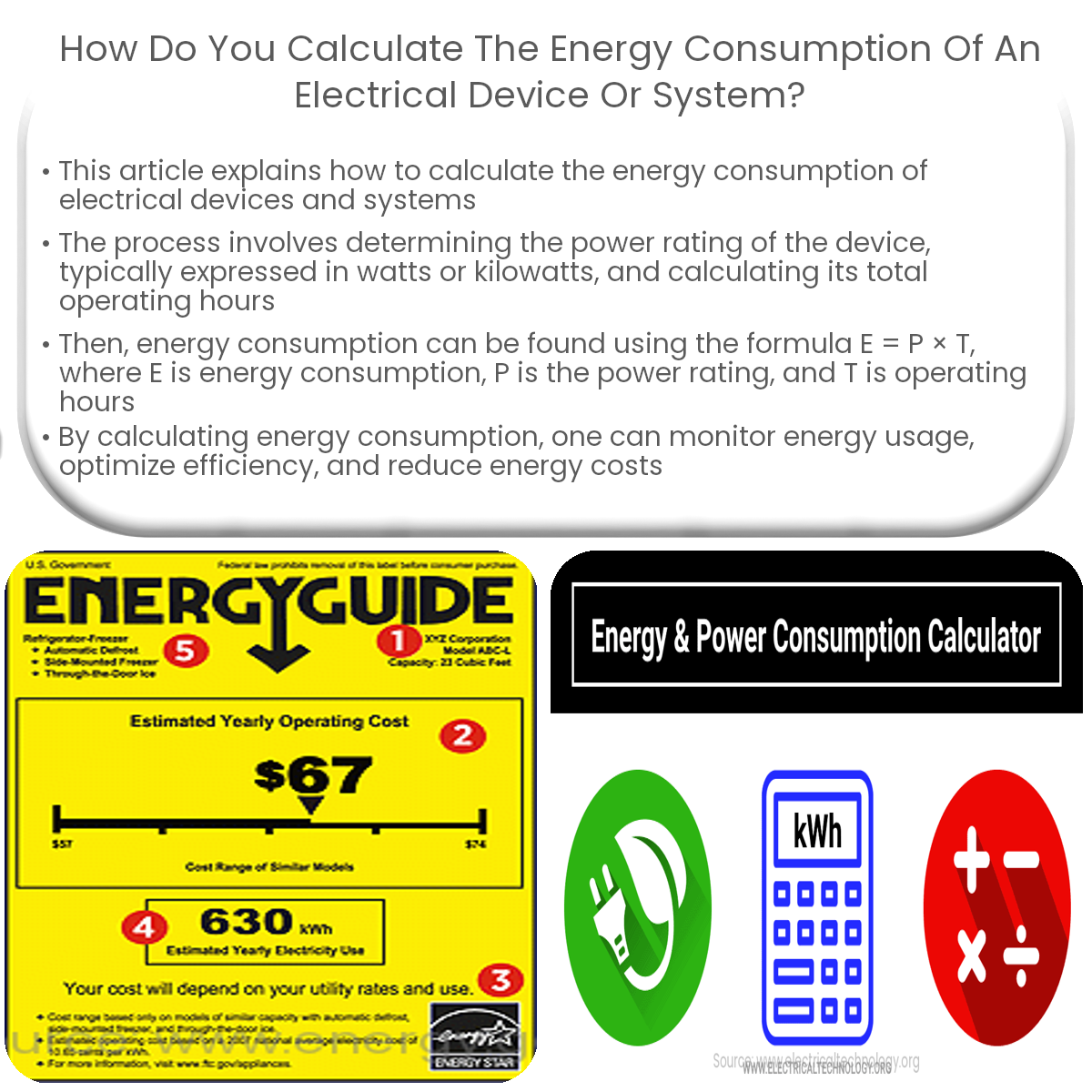To calculate energy consumption, find the power rating (in watts), estimate the operating hours, and then multiply power by hours to get watt-hours.
Calculating Energy Consumption of Electrical Devices and Systems
Energy consumption is a crucial aspect of electrical systems, as it directly impacts operating costs, efficiency, and environmental sustainability. In this article, we will discuss how to calculate the energy consumption of electrical devices and systems.
1. Determine Power Rating
First, identify the power rating of the device or system, which is typically expressed in watts (W) or kilowatts (kW). You can find this information on the device’s label, in its specifications, or by measuring its voltage and current using a multimeter and applying the formula:
P = V × I
where P is power, V is voltage, and I is current.
2. Calculate Operating Hours
Next, determine the total operating hours of the device or system during the period for which you want to calculate energy consumption. Estimate the daily usage in hours and multiply it by the number of days in the period.
3. Calculate Energy Consumption
Finally, use the following formula to calculate energy consumption:
E = P × T
where E is energy consumption, P is power rating, and T is operating hours.
The energy consumption will be in watt-hours (Wh) or kilowatt-hours (kWh), depending on the power rating unit used. Note that 1 kWh is equal to 1,000 Wh.
Examples
Let’s consider two examples:
- A 100-watt light bulb used for 5 hours per day over a month:
P = 100 W
T = 5 hours/day × 30 days = 150 hours
E = 100 W × 150 hours = 15,000 Wh = 15 kWh
- A 2-kilowatt air conditioner used for 4 hours per day over a week:
P = 2 kW
T = 4 hours/day × 7 days = 28 hours
E = 2 kW × 28 hours = 56 kWh
Conclusion
Calculating the energy consumption of electrical devices and systems is a straightforward process that involves determining the power rating, operating hours, and applying the energy consumption formula. This information is essential for monitoring energy usage, optimizing efficiency, and reducing energy costs.


